Nissan Patrol Launch Review




I'm going to skip ahead to the outrageous bit for the sake of some much-needed context. RTo be honest, it's a hell of a lot of Japanese SUV,, but then it's been just that for the last 7 years since it was rolled out in this guise internationally. Rolled out, and over anything in its way. Just the same as the Nissan Patrol claws its way out of treacherous terrain, I'm going to try to claw back some merit for this 4x4.
Indomitable legacy


The burly Nissan Patrol offers proven off road capability and it coped well in tough terrain on launch.
The Nissan Patrol has quite the legacy, a senior samurai with a lineage spanning 6 models and 66 years. This one is a proper force of nature. Braced with 298 kW and 560 Nm from a burly traditional, naturally-aspirated V8 measuring 5.6-litres in capacity. Top speed is a respectable 210 kph but one imagines the Patrol could achieve this through treacle if required, left to its own devices – with lethargic shifts of its 7-speed automatic specifically.
If that engine is its muscle, the sinew wired to its limbs must be the All Mode 4x4i with the full array of drivetrain modes (4H, 4L as well as diff-lock and limited slip differential) that enable its tenacity. There’s no fancy air suspension here, instead, HBMC (Hydraulic Body Motion Control) does the job of flattening any surface into a creamy soufflé.
For its neural network, Nissan has employed its full Intelligent Mobility Suite of electronic aids and enhancers. I refer to blind spot warnings and preventive measures, lane departure warnings with intervention, intelligent cruise control and with this a raft of safety tech as well. Things like Intelligent Driver Awareness, 360-degree Around View Monitor (using all 5 cameras) plus the usual acronyms such as ABS, EBD and BAS (brake assist) and lest we forget, ye olde seat belts.
Armed with the aforementioned attributes, we aimed our Nissan Patrol north towards De Wildt Game Park and its 4x4 proving grounds for some extracurricular activities, but not before taking in the Patrol’s on-asphalt behavioural traits.


Yes, that 140-litre fuel tank might sound impressive now, but it’s filled with quick-burning petroleum which I incinerated at a rate of 16.0 L/100km. But then we pulled into the game park’s gravel road infrastructure and the Patrol began to make much more sense.
There’s a reason the United Arab Emirates love it. Yes, typically it is at home launching off towering dunes and at play in vast deserts, but there’d be none of that here on rather craggy gravel, pockmarked and loosened by the rain. Also, petrol is cheaper there. Way cheaper.
The Patrol, with its 272 mm of ground clearance (approach angle of 34.3 degrees, break-over of 24.4 degrees and departure of 26.2 degrees) advanced effortlessly. It descended and ascended absolutely everything with little more than a thumbing of the diff-lock selector on the rare occasion. I’m sorry. I have nothing to report. If you ever need to travel to the Gates of Mordor in supreme comfort, get a Nissan Patrol.
Luxury Vs Utility
If you're in the market for a luxury off-roader, then I'll admit you're spoilt for choice at this price point. Teutonic and British badges adorn countless full-size SUVs, luxury vehicles with varying degrees of off-road capability. But if you don't want a flashy BMW X5 or a Range Rover, and prefer something with the aerodynamic qualities of a concrete block with marginally more understated aesthetics, then there is really only one rival – the Toyota Land Cruiser.

An 8-inch touchscreen with Satnav is fitted, as well as 2 screens for rear passenger entertainment.

Align your expectations accordingly and you’ll better appreciate the Patrol for its brand of luxury, being wholly based on its utilitarian origins. There’s no flash. No rising gear knobs, no twirly in the sky augmented controls, but there is an 8-inch touchscreen with 2 more screens for the middle row.
It’s a 7 seater with a third row that can fit whole human beings, a Bose speaker system to entertain them, Sat-Nav with 3D mapping and a powered tailgate. It also has a refrigerator between the front pews and sheer acreage of living space there and everywhere else. It also has a full-sized spare wheel, a 6-year / 150 000km warranty with roadside assistance and can tow 3.5 tons merrily. Does that add up to R1.3 million? Only you can decide.
The sum of its parts

The Patrol is Nissan's Godzilla of SUVs…
Nissan representatives themselves admit that this is not meant to be a volume seller, but rather to represent the upper echelon and indeed the uppermost rank in their SUV lineup.
As for everyone else, you’ll have to ‘make do’ with premium machinery such as the new Land Rover Discovery HSE and BMW X5 and I suspect you’ll be perfectly happy in doing so too. The Nissan Patrol then, for when your love of V8 noises and tearing up twisted terra firma collide with a need for absolute comfort and a penchant for Japanese monsters. And you thought their other flagship deserved the name Godzilla?
Quick stats
Nissan Patrol 5.6l V8 LE Premium AT 4x4i
Power/Torque: 298 kW / 560 Nm
Fuel consumption: 14.4 L/100km
Top speed: 210 kph
You know you want it. Get in the Patrol at a Group 1 Nissan dealership and test drive the Nissan Patrol.
Posted on May 24th, 2018
Review: 2017 Nissan Almera 1.5 VL AT
Nissan Philippines’ entry to this segment is the Almera. This model may sound new for some but it’s the soul successor to the small family sedan from the '90s called Sunny. With that, we borrowed the top-of-the-line Almera 1.5 VL AT to see how it performs as a daily car.
On its side, the Almera has less character lines and has a tall profile. The rear end of this variant gets a small lip spoiler, adding a sporty touch to its demeanor. Overall, its design isn’t as sleek as its competitors such as the Honda City and Mazda2 Sedan, or the popular Toyota Vios, but it’s more of a simple car with a tad touch of class.
Speaking of interior, the Almera has a light interior theme; the cabin is dominated by a combination of grey and beige materials. If you want a well-lit cabin, this one's for you but you need to be extra cautious of stains and dirt. The dashboard is straightforward and clutter-free, while the black central panel with circular button cluster for the automatic climate control is a bit off if you ask me. The plastic parts are also up to your preference.
Body roll is present, yes, as this car is equipped with soft suspension that can absorb reasonable road imperfections. With these mentioned traits and Nissan’s legendary air conditioning, we can boldly say that the ride comfort for the driver and the passengers is the best characteristic of the Almera.
The car performs well whether we like a relaxing drive or a fast-paced trip. The engine is responsive and the rev matches every input on the accelerator pedal. It’s also able to pull the car easily with 4 people on-board and uphill climbs aren’t really a problem, even with the absence of hill start assist.
Best part of it? The Almera registers impressive fuel economy figures. Stop-and-go situations on EDSA at an average speed of 15 km/h gave out 7.1 km/l reading, while light traffic at 60 km/h registers 15.2 km/l. Highway stints, on the other hand, read 21.3 km/l at an average speed of 90 km/h.
For someone who drives 3-4 hours a day in all types of road situations, I can boldly say that it’s indeed a great buddy on the road. For a range-topper, it’s among the least expensive within its class, yet, it has all the essentials for a comfortable and enjoyable ride — features worthy for you to consider as a daily driver.
SPECIFICATIONS
Engine Fuel Type Performance Transmission
1.5 L Gasoline 99 hp @ 6,000 rpm Automatic
For more details and specifications on the Nissan Almera - contact or visit a Group 1 Nissan dealership today.
Article source: https://simplysoldonnissans.weebly.com/blog/review-2017-nissan-almera-15-vl-at
Posted on May 2nd, 2018
Review: Nissan X-Trail 2.5 4x4 CVT

The C-segment crossover war has been seen with guns blazing in the last quarter of 2017. Nissan Philippines has brought in its latest soldier from Japan armed with new firepower in the form of Nissan Intelligent Mobility. Yes, the X-Trail for sale is back and is better than ever with more than a few fresh tricks up its sleeve.

STYLING
This refresh comes with sportier, sharper lines, especially noticeable with a stylishly sinister front end. The redesigned LED adaptive headlights and evolved Gundam-like V-motion grille and bumper are the center of attraction here.
As you veer toward the sides, you’ll be greeted by huge dual tone 19-inch rims wrapped with Japan-made Bridgestones complimenting its profile. The rear brings back memories of that 1990s' hip-hop track Bring That Booty because it simply looks pretty darn good.

INTERIOR
I must say the cabin has really caught my fancy as it is a solid step up from the previous. Blame it on the flat bottom tiller, spacious interior, cozy lumbar-supportive leather bucket seats with power-adjustability for both driver and passenger, dual climate control plus second row air-conditioning vents, a decent audio system, ergonomic dash/side panel layouts, improved NVH levels, and a panoramic sunroof that creates an atmosphere of engagement.
Despite the rather small size of the non-touch infotainment screen and the presence of scratchy plastic here and there, I think the brand’s design department pretty much nailed it. Let’s not forget the third row (it’s still a seven-seater) that folds completely flat and with the right second row adjustments—provided you’re not sharing the vehicle with NBA players—can accommodate my fairly large frame without having to resort to advanced yoga positions. Given its class, cargo space is fairly good and still provides room for a few small pieces of luggage with the last row upright.


ENGINE PERFORMANCE
Since the previous naturally-aspirated 2.5-liter four-banger mated to a six-speed Xtronic CVT was carried over, my excitement waned as I recollected my mild disappointment when I tested the 2015 version at a time while I was car shopping. Blame it on the CVT, I guess.
Fortunately, after my initial drive, I realized that Nissan had tweaked the tuning for a substantial improvement in throttle response and smoother power delivery of its 169hp backed up with a palpable 233Nm of torque as it propels you from 0-100kph in about 10 seconds. The rubber band effect of the tranny is still evident when you floor the accelerator, but it all works out fairly well.
Fuel consumption was tested to 16.1km/L on the tollways maintaining 100kph with cruise control and 14km/L on the national highway with occasional traffic—not bad at all. In Manila’s gridlock, it returned 6.5km/L. Then again, any other vehicle wouldn’t do so good either under such congestion.

RIDE AND HANDLING
It’s clear that Nissan aimed for comfort as the X-Trail isn’t only a joy to drive, but it also offers a satisfying experience for its occupants. Suspension is very composed on paved roads and capable of handling varied terrain without issues.
There’s even a selector knob switch in the center console that allows you to manually choose from 2WD to the 4x4 I-System—an intelligent all-wheel drive feature that detects slippage or rough terrain and triggers adjustments to maintain control and stability.

EXTRA FEATURES
Peace of mind is a big factor when tackling our roads, and this is where Nissan Intelligent Mobility comes in. Think of it as a safety shield of technology encompassing the entire vehicle. It's part of Nissan’s goal to reduce vehicular crashes and fatalities. This includes a 360-degree view monitor with moving object detection, forward collision warning with emergency braking (works between speeds of 5kph to 80kph), rear cross traffic alert and blind spot monitoring/warning.
Though the tech isn’t foolproof, it’s good to know it is effective in reducing the chances for accidents and aids the driver in cramped spaces. The 360-degree camera is great. Backing up sensors would have been nice for added assurance, considering the monitor is smaller than expected, which makes seeing little obstructions a bit difficult especially under unfavorable conditions. In addition, I did find it odd that it’s equipped with only a pair of airbags in the front.
Another nifty feature is the motion-activated tailgate. When both hands are full, you can still conveniently load your boot via hands-free operation.
VERDICT
The new X-Trail is already a gem but needs some fine polishing in some areas. The top trim definitely gives the competition—even those with diesel mills—a run for their money. To not consider this offering when scouting for your next family crossover would be deemed unwise in our book.
SPECS: NISSAN X-TRAIL 2.5 4x4 CVT
Engine: 2.5-liter QR25DE
Transmission: 6-speed Xtronic CVT
Power: 169hp @ 6,000rpm
Torque: 233Nm @ 4,000rpm
Powertrain: 2WD/4X4 I-System
Score: 17/20
If you’re in the market for a Nissan X-trail for sale, or just want to take a X-trail for a test drive - visit a Group 1 Nissan dealership near you.
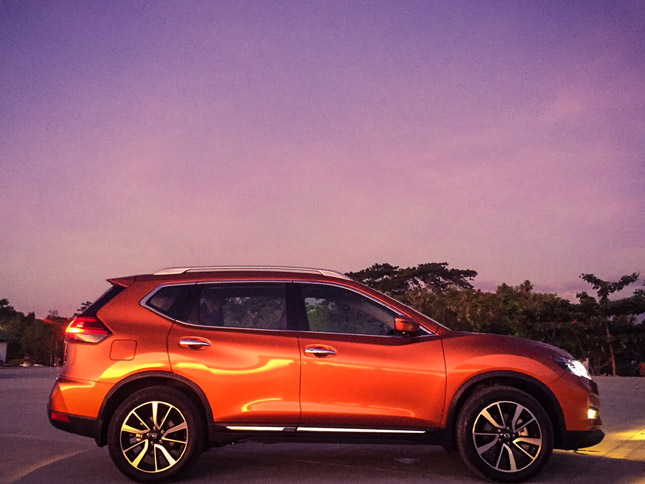
Article source: https://nissanenthusiast.wordpress.com/2018/03/22/review-nissan-x-trail-2-5-4x4-cvt/
Posted on March 22nd, 2018
Nissan South Africa confident of delivering on long-awaited investment promise in 2018

Vehicle manufacturer Nissan in 2012 confirmed plans to invest R1-billion in its Rosslyn plant, in Pretoria, to build a new one-ton pick-up, with capacity at the plant to be increased to around 100 000 units a year.
Local production of the new model was set to start in 2014. Today, at the end of 2017, this production programme is yet to materialise.
It has always been believed that the one-ton pick-up would be the new Nissan Navara.
Since the announcement, however, the twelfth-generation Navara was revealed to the world in 2014 in Thailand and released in Europe in 2016. The pick-up also launched in South Africa earlier this year, fully imported from Thailand.
It has been a long five years of answering questions on the future of the Nissan plant for Nissan Group of Africa MD Mike Whitfield.
In 2017, his answer remains unwaveringly similar to his response in the years before: the investment in Nissan South Africa (SA) will happen. It’s a question of when, not if.
THE NISSAN PLANT
Today, the Nissan plant produces the NP200 for sale half-ton bakkie and the previous- generation NP300 pick-up, with the latter also exported to selected African markets.
Production at the plant has fallen from around 55 000 units in 2012 to somewhere between 35 000 and 40 000 units this year. Last year was particularly bad, with production of roughly 29 000 units.
The Nissan Rosslyn plant this year benefited from the announcement in May by US carmaker General Motors that it would depart from South Africa by the end of this year. This move has meant the slow demise of the Chevrolet Utility half-ton bakkie, to the benefit of the only other competitor in this segment – the Nissan NP200.
Sales of the Chevrolet Utility dropped from 1 159 units in May to 412 units in September. Sales of the NP200 increased from 1 140 units in May to 1 638 units in September.
THE PLAN
Nissan forms part of a global alliance with French brand Renault. The alliance this year became the world’s biggest vehicle seller, courtesy of Nissan acquiring 34% of Mitsubishi in 2016.
The focus of the South African plant will be on becoming “a production base" for light commercial vehicles (LCVs, which include bakkies) for South Africa, the rest of Africa and possibly the Middle East, says Whitfield.
“We see the plant as a strong supplier of LCVs to the Nissan group."
Nissan SA is in the “preparation phase" for the introduction of a new model to its production line-up, he adds, with more information to be shared in the first half of 2018.
“It is about what fits into our global planning, and we have to figure out what has the potential to grow a lot," says Whitfield. “We compete against the 40-odd plants in the Nissan Renault alliance globally."
Despite the strong bakkie focus at the Rosslyn facility, rumours are surfacing about possible Micra passenger car assembly – a rumour not confirmed by Whitfield.
Would Nissan consider building the Renault Alaskan locally? After all, the soon-to-be-introduced Alaskan shares the same platform as the Navara, and the two companies are members of the same global alliance.
“Our priority is first and foremost Nissan. Our intention is to fill one- to two-shift capacity with that," says Whitfield. “For us, number one is to build Nissan; number two is to use the available capacity."
FROM 2012 TO 2018
Whitfield admits that the announcement of new product investment in the Rosslyn plant has “been dragging on and on".
What makes him believe that 2018 will finally deliver on the 2012 promise of investment by Nissan’s Japanese parent company?
For one, the Rosslyn plant has managed, in the last three years, to pull itself from the bottom third in terms of quality within the Nissan-Renault alliance into the top half.
“We are on track. Our quality is good," says Whitfield. “Obviously, we have to continue improving, but we have come a helluva long way. Three years ago, we were definitely not at the level we are today. Three years ago, we were not globally competitive. Three years ago, we had stoppages – we weren’t consistent. We are in a very different place today. I can confidently say that this is a very different plant."
One indication of this upwards momentum is the Ipsos Quality Survey. The Ipsos survey researches new-vehicle sales, interviewing thousands of new owners on gripes about their new vehicles after about 90 days of ownership, not only in terms of defects but also in terms of perceived design flaws.
Combined, this data produces a vehicle quality survey score. The score is presented in terms of problems per 100 vehicles. In 2015, the NP200 scored 103 – meaning just over one problem per vehicle. In 2016, this number dropped to 84, or around 0.8 problems per vehicle.
Competitiveness, quality and stability “are no longer inhibiting factors" in investing in the Nissan plant, says Whitfield. “We are on track to be able to move to the next stage."
The new year should, of course, also provide some answers on fresh leadership at the African National Congress, the current majority party in Parliament, with current President Jacob Zuma facing increasing pressure related to corruption allegations.
A 'NEW' ROSSLYN PLANT
Nissan SA spent R50-million this year – as it did in 2016 – to upskill its staff.
Over the past two years, the company has sent 34 supervisors to the UK for eight weeks of training. Sixty new graduates from universities around the country are also working at the Nissan SA site, of whom 99% are black, and with more than 50% of this number being black women.
Nissan SA has also appointed 70 new people within the plant.
In addition to this expansion, the company has invested in a new training centre, as well as an incubation centre to grow small and medium-size black enterprises into components suppliers.
This year has also seen a R200-million investment into the plant and surrounding facilities.
“The important thing is not the quantum of money," says Whitfield. “We are investing in people and in continuous productivity and quality improvements. The next big investment will be product related."
In an effort to gain flexibility, the Nissan plant will undergo a major change in December and January.
Nissan SA will close the Rosslyn plant for six weeks over December to merge the NP200 and NP300 lines into one.
“The market in Africa is very flexible. Our plan is for LCVs, but we need a plant that can build anything," says Nissan SA manufacturing MD Joan Busquets.
The challenge is that the NP300 has a frame, while the NP200 has no frame.
“This will make [Rosslyn] unique. There are not many plants that can do this. There is one in Japan. It could bring us a big opportunity to adapt quickly to the market," notes Busquets.
Once the lines are merged, the Rosslyn plant will move to 180 vehicles a shift, with a further increase to 200 vehicles a shift in the next quarter.
“That is more than enough in the current market," says Whitfield. “The line allows us to flex it up and down."
Other projects on the go include the upgrading of the stamping facility to “the newest technology", says Busquets.
“To build the new parts for the new vehicle, we need a bigger machine."
The paint shop is also being upgraded, with aspects such as humidity control and creating a dust-free environment receiving attention.
“We are managing the dirt and implementing the newest technology in terms of painting," notes Busquets.
The paint shop can manage 33 jobs an hour, which means it will be able to manage 100 000 vehicles a year on a two-shift operation, he adds.
The increased use of robots is not necessarily on the cards.
Nissan SA’s body shop makes use of five robots. Another vehicle manufacturer’s plant in Rosslyn will use 300 robots in its body shop when it starts full production of a new model next year.
Whitfield says robots are not necessarily an indication of quality. He says the Nissan plant in India has fewer robots than the Rosslyn plant, but that it produces high-quality vehicles. The India plant opened in 2010, and produces around 300 000 vehicles a year.
LOOKING AHEAD
“In the automotive sector, you cannot sleep even one minute – it is a race every day. You need to be fit enough for the new challenge," says Busquets.
An electrical engineer by training, Busquets hails from Barcelona, Spain. He has been with Nissan for 27 years, the last two-and-a-half of which have been with Nissan SA.
“It is nice to see how things are improving now," he says. “I am very happy with the job we have done in the last two-and-a-half years."
Ten years from now, says Busquets, he would like all those trained by him and within Nissan to have excelled within the group.
“And our plant ranking? We are competing against [one another] – like the Champions League. I’d like to see Nissan SA grow into the top ten."
“For me, the exciting part is that we are really a plant that is now ready to seriously compete on the world stage for production allocation," says Whitfield. “That is where we are now, and we hope to share this in the first half of next year."
Group 1 Nissan offers the Nissan NP200 for sale to fulfill your bakkie dreams. Test drive the Nissan NP200 and see that the proof is in the ride.
Posted on March 22nd, 2018
5 reasons why Nissan's special edition NP200 bakkie is cooler than ICE
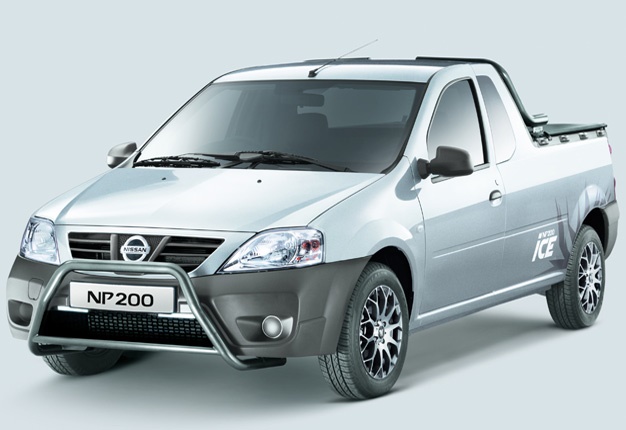
Cape Town - Toyota Hilux, Ford Ranger, Isuzu KB, and these days even the Fiat Fullback and Mitsubishi Triton makes the cut of awesome vehicles when you think of bakkies. With such amazing offerings its each to forget the smaller, single cabs are legendary vehicles in their own right.
Nissan's NP200 ICE is one of those gems, and the only reason I haven't purchased one yet is because there's no room for my sprog and her car seat. A double-cab bakkie in this form just wouldn't look right.
Overall, it's great as an everyday workhorse and definitely plays the part of a lifestyle bakkie when you need it. It's zippy enough to race about to and fro and steady enough to handle heavy loads for agricultural/commercial duties.
Here are 5 reasons why we fancy this little bakkie.
1. It's funky and good-looking.
The NP200 has sharper lines, a new grille that makes it fit inline with other Nissan siblings. It's fitted with a bull-bar at the front and a sports bar at the rear. Bumpers are black plastic and help the bakkie achieve a more rugged look. It also sports spotlights and cool decals. It looks just as good on the inside
2. The 1.5 dCI is a winner
Power figures are everything, and although 63kW doesn't look that great on paper, it's more than suffice on the road with a gutsy 200Nm. It's never lazy and always ready to go when you apply the accelerator. It's able to be used as a daily drive and a workhorse in a pinch.

3. It's super frugal
With a rated combined fuel consumption of only 5.3 litres/100km, you could go quite distance with this little Nissan soldier. And since there aren't too many systems other than the air conditioner to consume more fuel, you're guaranteed to get more than enough kilometres for your hard-earned Rand.

4. Less is always more
Neat and tidy interiors are a must in my books, and the NP200 Ice ticks that box with flying colours. It's uncluttered, simple and easy to use. There's even some space behind the two seats for small parcels, bags or jackets. It's cheap too, for a bakkie.
5. It really is as cool as ice
No really, the NP200 can help you stay cool by loading up its load bed and turning it into a giant cooler box for a weekend out camping, or on the rugby field. Or just an easy-access alternative to a freezer while having a braai at home with friends. The load bed comes fully rubberised by using a a spray-on polyurethane. This makes the bakkie's bay ore durable for any tasks at hand.
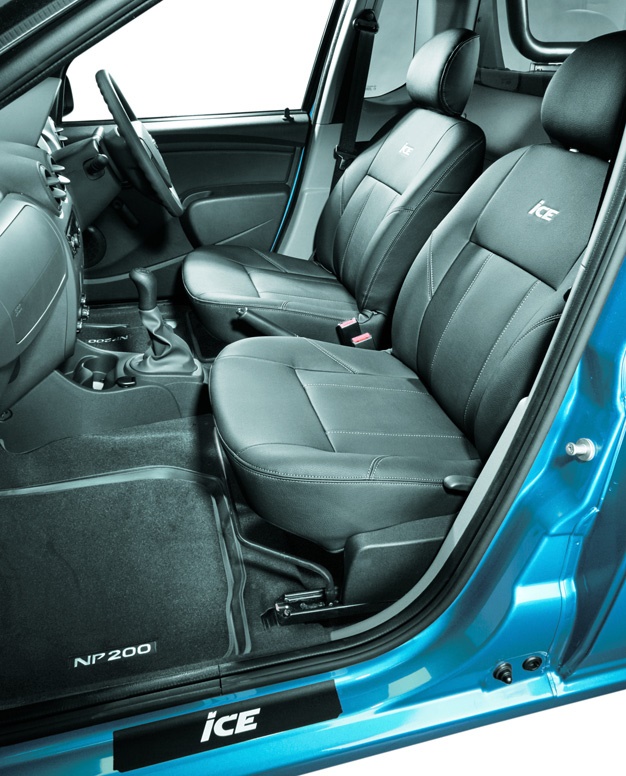
Posted on February 22nd, 2018
Nissan Micra Active Quick Review
With the new Nissan Micra scheduled to reach South African shores in 2018, some might argue that it would be pointless to consider the ageing current version... However, Nissan South Africa is hedging its bets: whereas the new Micra will move upmarket, the cheerful hatchback we all know will continue (in Active guise) as a budget car. It looks like quite the bargain...



What is it?
The new Micra arrives in South Africa in 2018, but Nissan's local subsidiary is "pulling a Polo Vivo" by retaining the outgoing model, which will be sold as a budget offering alongside the newer, high-tech Micra. Okay, there's nothing groundbreaking here and admittedly this Micra is getting on its years, but the strategy is a clever one: while the new Micra will take on the new Volkswagen Polo and Ford Fiesta, this older Micra Active will compete against the popular Volkswagen Polo Vivo and Renault Sandero, to name just 2 rivals. Given its price tag, is it worth your time and energy, or should you be looking elsewhere?
The Good

A simple and fuss-free motoring experience awaits you from behind the wheel of the Nissan Micra
Inherent solidity
It's hard to describe the feeling of substance, but we'll give it a go. See, many entry-level cars feel notoriously flimsy and thin in places; almost as if it would be a miracle if they (the cars) would last beyond 100 000 km. This Micra, however, is a little different. It has a reassuringly solid feel to it as if it has been designed to handle whatever hard use its owner or occupants can subject it to. It may be basic and affordable, but it feels tried and tested, not flimsy.
Ride and drive
That feeling of solidity continues in the way the Micra Active drives. While some (typically skinny-tyred) budget cars feel so light on their... wheels, so much so that they're vulnerable to crosswinds, the Active offers good stability and its cabin incorporates a fair level of noise, vibration and harshness suppression. At sea level, the little 1.2-litre 3-cylinder motor pushes out 56 kW and 104 Nm, which combines well with a neatly-spaced 5-speed manual gearbox. The engine is also reasonably thrifty and while the claim of 5.2 L/100 km is a little hopeful, we were happy to see returns of around 6.0 L/100 km.
Customisation
It may be marketed as a vehicle aimed at thrifty buyers, but you can have some fun with some visual upgrades such as a rear spoiler (R2 893), 14-inch black alloy wheels (R5 070) and metallic paint (R1 350). All of these were fitted to our test unit, which gave the Nissan an extra bit of street cred. No one said budget has to be boring and in this segment, you're not spoilt for choice when it comes to new cars with some visual personality...

The metallic paint and black alloy wheels add some personality to the Nissan Micra Active
Features
Even though the Micra Active is a cut-price offering, it still boasts a reasonable amount of kit as standard. Remote central locking and electric front windows are nice-to-have features, but we were surprised to find that an audio system is an optional extra. The good news is that this touchscreen audio system is an item well worth ticking on the options list because it boasts AM, FM, CD, MP3, RDS, auxiliary & USB inputs, Bluetooth with audio streaming AND satellite navigation. In terms of safety features, the Micra Active includes a driver and passenger airbag and ABS, which is on par for the segment. Nissan was offering a killer deal when this vehicle launched, where the satnav audio system was added on for free. Perhaps there are still some units floating around?

The infotainment system features navigation, Bluetooth streaming and a nice touchscreen interface. We'd like it to be a little brighter though.
The Not-so-good
Engine doesn't quite have enough
We've already said that the Nissan's engine is adequate for general use, but when you consider that the little car will have to work as hard as it can to lug 4 occupants, plus a capacity load of luggage/cargo in the thin air of Johannesburg, the outlook looks less than rosy. For those who are not aware, the higher you climb, the less dense the air is, resulting in a power drop for naturally aspirated vehicles. Typically non-turbocharged cars lose around 17%, which for the Micra means it's now pushing out a paltry 50 kW. Thankfully the proven powertrain should be able to withstand this sort of treatment now and again.
Verdict

Simple and affordable, with a splash of personality. The Micra Active will be sold alongside its newer brother when it arrives next year.
It's a clever ploy by Nissan to tap into the budget car segment. If it has worked for Ford (Figo) and Volkswagen (Polo Vivo) then there's no reason why this Active derivative won't do well alongside its newer sibling. If you can get past the looks and don't have to lug much cargo, then the Micra should be on your shopping list as its price is hard to argue against. Save up to get the radio as an option, you won't regret it. At this price point, there are very few cars that offer as much car as the Micra does.
View the Nissan Micra Active at Group 1 Nissan here, or visit a dealership near you and test drive a Nissan Micra Active today!
Posted on January 31st, 2018
7 thoughts about the Nissan Almera
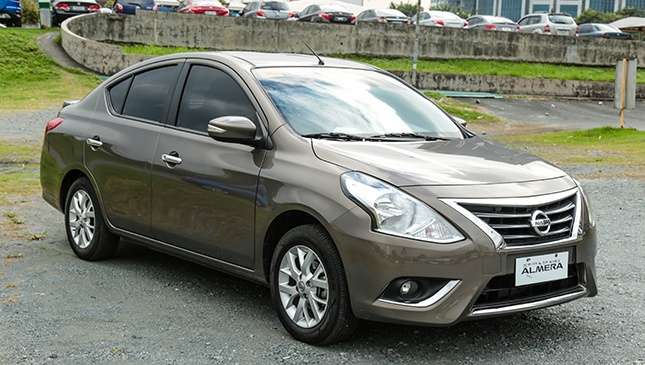
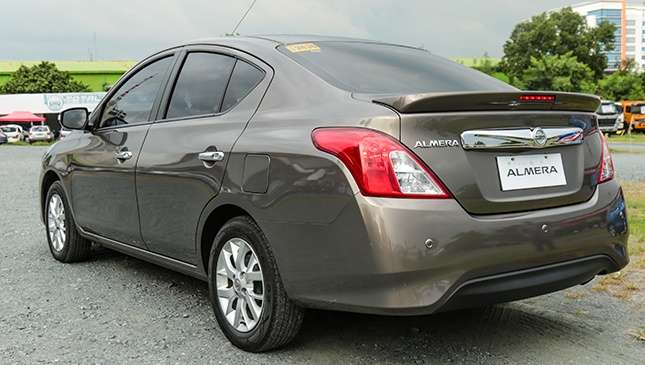
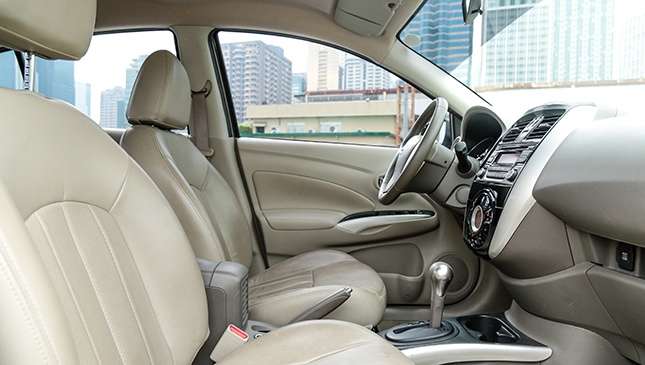
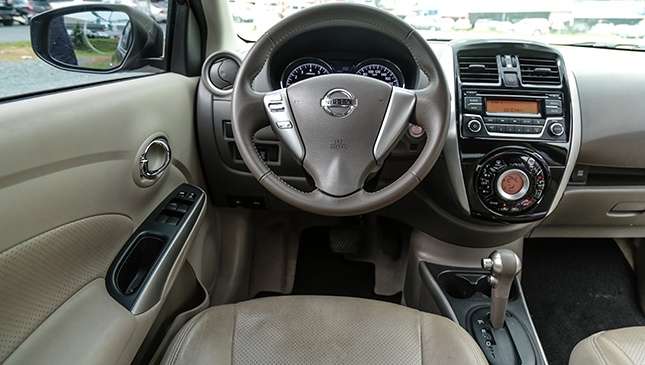
1) There's room, and lots of it. Subcompact? Sitting inside the cabin, you'd be forgiven for mistaking the Almera belongs to a larger segment. The sedan boasts what could arguably be the most impressive headroom and legroom in its class, comfortably sitting five passengers over moderate distances and offering more than enough room to stretch in while stuck in traffic.
2) The trunk is just as cavernous. Abundant space isn't limited to the car's interior. Loading and unloading gifts, luggage and other cargo was a cinch, and most of the time there's room to spare. There's enough room back there for the entire family's holiday shopping run, and then some.
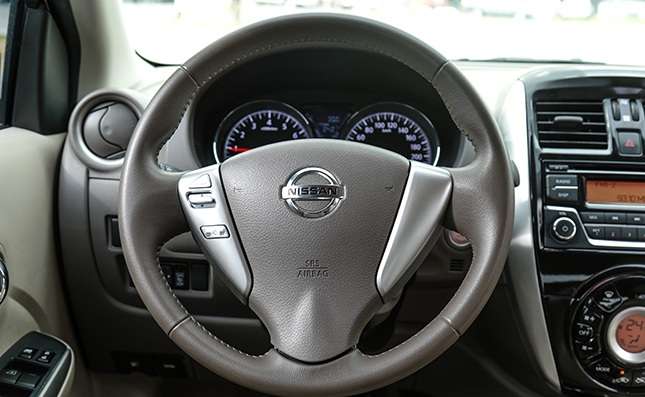
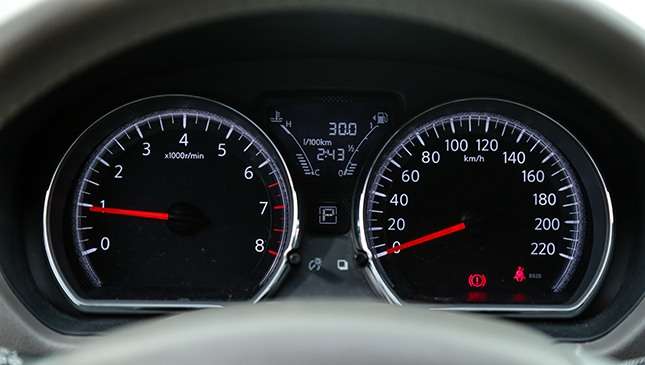
4) It has Grade A air-conditioning. It's a Nissan, so this shouldn't come as too much of a surprise. In fact, we hardly ever had to switch on the rear passenger vents (yes, there are A/C vents in the rear). And on occasions we did, occupants would complain that the cabin climate was too chilly. Begs us to ask if they're even necessary, but then again, summers here are something else.
5) The ride is composed, performance is reliable. The Almera's noise vibration and harshness levels impress. Save for only deeper potholes and streets where it's blatantly obvious the local government's been stingy with its project funding, the sedan handily absorbs bumps and other imperfections at city speeds. Throttle response is good, and overtaking trucks and PUVs (during the rare instances where we weren't stuck in traffic) didn't pose a problem.
6) We're not sure what to think of the interior. Frankly, we've got mixed feelings regarding this part. The Almera's cabin is like Zooey Deschanel in the sense that it treads the fine line between a quirky we can appreciate, and one that's downright confusing. Rounded out A/C vents, a chunky steering wheel, glossy plastic and bottle opener door handles make for a relatively playful-looking setup. Depending on how you look at it, that could betray its professional exterior. But maybe it's just us.
7) It has enough features to get by. Our top-spec unit came with a push/start button, remote trunk control, rear passenger A/C system, and rear parking sensors. Music is limited to FM radio and an auxiliary connection—no touchscreen or Bluetooth, unfortunately. It's pretty bare entertainment-wise for a top-spec subcompact, but other than that, it's enough.
Overall, the Nissan Almera offers great practicality and efficient performance—we averaged 8.5km/L in city driving/holiday traffic—in a professional-looking package. Admittedly, the unit we had felt a little basic for a top-spec variant. Depending on the buyer, this can put it in a disadvantage as competition in the segment is as stiff as ever, both price-wise and in terms of features.
Still (yuppies be damned), Nissan mainly markets the Almera as a blue collar daily driver, and from our experience it plays this role admirably. Its great space and impressive comfort make it relevant in an increasingly cut-throat subcompact sedan market, and this is something anyone driving home tired from the daily grind can appreciate. In the immortal words of John Lennon: "a working class hero is something to be."
View the Nissan Almera’s on offer at Group 1 Nissan and find the perfect Nissan Almera for you!

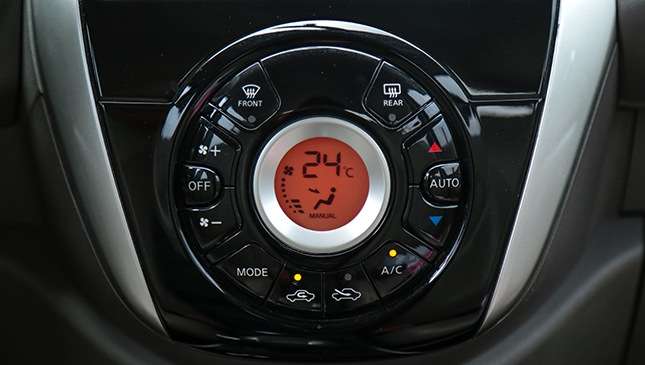
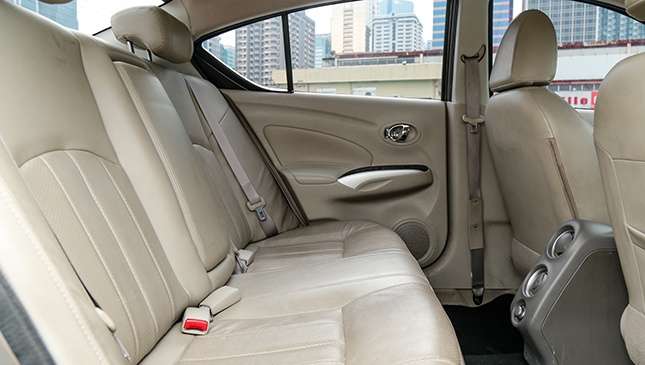
Posted on January 8th, 2018
Updated Nissan Almera Reintroduced For 2014 Model Year – Specs and Prices

With a booming pre-owned vehicles market, one of the most popular Nissan family cars is the Almera. If you are hunting around for a used Nissan Almera for sale, this review that we digged up for the 2015 Nissan Almera, might be useful:
Nissan has updated the looks and specification of its Almera sedan for the 2014 model year.
"With cumulative sales of some 3 500 units, the new Nissan Almera has seen great success in the South African market since we reintroduced the nameplate in 2013, forming a strong following in both the rental and private buyer markets," says Alda Gildenhuys, ALMERA Product Manager at Nissan South Africa.
Updated face and interior enhancements
"For 2014 we are offering even more car for the money, with updated looks and enhanced specifications elevating Almera to lead the pack in its segment. The space and versatility so prominently offered by the Nissan Almera remain as key characteristics and reconfirms Almera as a forerunner."
Changes to the exterior include an aggressive front bumper, along with a more distinguished chrome grille flanked by new edgy headlights. The car also comes with 15-inch alloy wheels, a redesigned rear bumper and rear parking sensors.
Interior enhancements include new seat fabric with contrasting stitching, an updated fascia with a new audio system design and classier air conditioning controls. The steering wheel has been updated with satellite controls for the new audio system - which now has a USB port in addition to Bluetooth wireless connectivity.
Updated Nissan Almera range
The Almera range continues to offer two models - the Almera 1.5 Acenta 5-speed manual and the Almera 1.5 Acenta 4-speed automatic. Both are powered by a 73 kW and 134 Nm petrol engine.
Safety features include ABS with EBD and BAS, auto-locking doors, three-point seat belts for all five seats, dual front airbags and ISOFIX child seat anchors.
Need more advice on the Nissan Almera? Contact a Nissan dealership, such as Group 1 Nissan, in your area.
Posted on November 6th, 2017
2017 Nissan Juke: New Car Review
As compact crossovers continue to grow in popularity, many automakers are scrambling to bring innovative new products to market. Luckily for Nissan, it already has a well-established player in the field, one that continues to set the bar for styling and performance. The 2017 Nissan JUKE combines quirky styling and a powerful turbocharged engine in a small but versatile crossover SUV perfect for cramped urban confines. Toss in the option of all-wheel drive and the JUKE becomes a year-round go-kart undeterred by snow-covered thoroughfares. Add a nice dose of cutting-edge electronic features, as well as the performance-oriented NISMO and NISMO RS models, and the JUKE's appeal becomes nearly irresistible to people of all ages.
For those who appreciate the JUKE's qualities, there's one more that may help seal the deal: affordability. The JUKE has a base price that starts at around $21,000, which is lower than that of most small crossovers and a bargain for all the model has to offer.
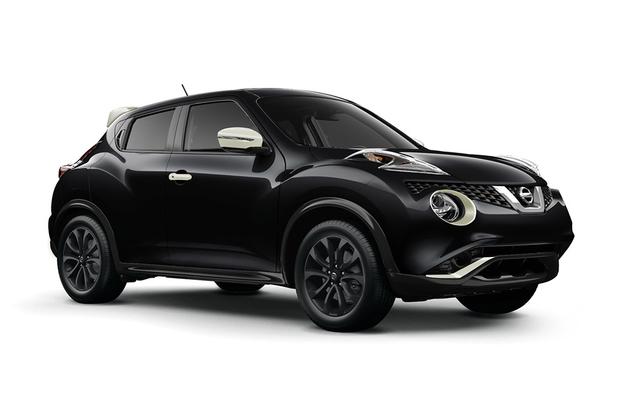
What's New for 2017?
New for 2017 are updated 17-inch alloy wheels on SV and SL grades. The SV adds heated cloth seats and side mirrors to its list of standard equipment.
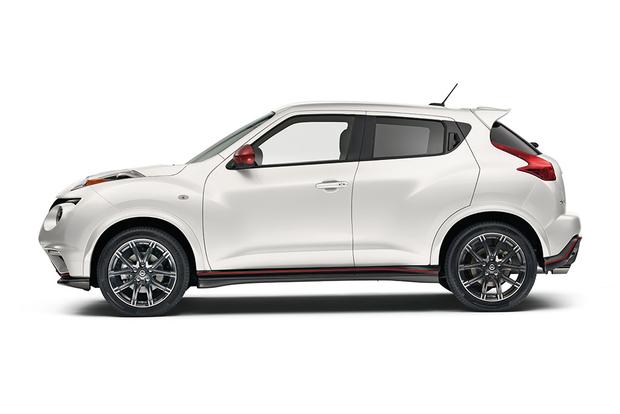
What We Like
Quick-footed handling; responsive engine; available all-wheel drive; comfortable seats; custom personalization program
What We Don't
Limited cargo space; some cheap interior materials; lack of rear-seat headroom; love-it-or-hate-it styling; ride can be rough

Fuel Economy
The 2017 Nissan JUKE for sale and JUKE NISMO are fitted with a 1.6-liter turbocharged inline 4-cylinder engine. Output is 188 horsepower and 177 lb-ft of torque. On the high-performance NISMO RS model, horsepower jumps to 215, with 210 lb-ft of torque. Energy is channeled to the front wheels by a continuously variable transmission (CVT). The JUKE also offers a 6-speed manual transmission, but only on front-drive NISMO trims. All-wheel-drive (AWD) models are only available with the CVT automatic.
The Environmental Protection Agency's fuel economy estimates for the front-wheel-drive JUKE are 28 miles per gallon in the city and 32 mpg on the highway. The AWD JUKE's fuel economy ratings are 26 mpg city/30 mpg hwy. The front-drive NISMO is offered only with the 6-speed manual and earns 27 mpg city/33 mpg hwy. The AWD NISMO comes only with the CVT automatic and earns 26 mpg city/30 mpg hwy. The NISMO RS earns 27 mpg city/31 mpg hwy with the manual and front-wheel drive, while the AWD NISMO RS with the CVT earns an estimated 25 mpg city/29 mpg hwy.

Standard Features & Options
Nissan offers five trim levels for the 2017 JUKE: S, SV, NISMO, SL and NISMO RS. All-wheel drive is available on all trims.
The JUKE S includes a CVT automatic, power windows, locks and mirrors, a 6-speaker AM/FM/CD stereo with an auxiliary input port, a rearview camera, Nissan Intelligent Key with push-button start, Bluetooth, cruise control, a tilt-telescopic steering wheel with audio controls, Siri Eyes Free, a trip computer and 17-inch alloy wheels.
The JUKE SV adds premium fabric, heated front seats, heated side mirrors, the Integrated Control (I-CON) multifunction controller, automatic climate control, USB/iPod control, a power sunroof, rear privacy glass and SiriusXM radio.
The JUKE SL is loaded with navigation radio, NissanConnect with mobile apps, Rockford Fosgate ecoPUNCH audio with a powered subwoofer, Nissan's Around View Monitor with moving-object detection, leather upholstery, heated front seats, fog lights and auto-on/off headlights.
The JUKE NISMO adds sport tuning for the suspension and steering, a lowered ride height, 18-in wheels and unique NISMO exterior and interior treatments. Also standard are navigation, NissanConnnect with mobile apps, Rockford Fosgate ecoPUNCH audio and the Around View Monitor with moving-object detection.
The JUKE NISMO RS brings a more powerful engine, a limited-slip rear differential (for manual models) and sport brakes.
All-wheel drive is an additional option. The Tech package (navigation, Rockford Fosgate audio and the Around View Monitor with moving-object detection) can be added to the SV trim, as can the Black Pearl Edition by Color Studio.
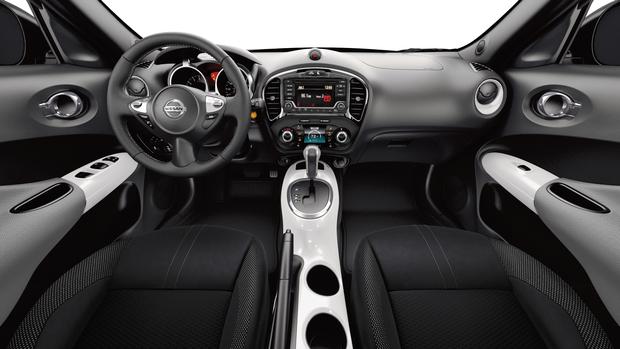
Safety
Standard safety features for the JUKE include anti-lock brakes, traction control, stability control, active front head restraints and six airbags (front, side and head-curtain).
In National Highway Traffic Safety Administration crash tests, the government gave the 2017 Nissan JUKE four out of five stars overall, with three stars for the front-end crash test, five stars for the side-impact test and four stars for the rollover test.
The JUKE earned the highest crash-test ratings from the Insurance Institute for Highway Safety in all but the small-overlap front crash test, in which it received a Poor rating.
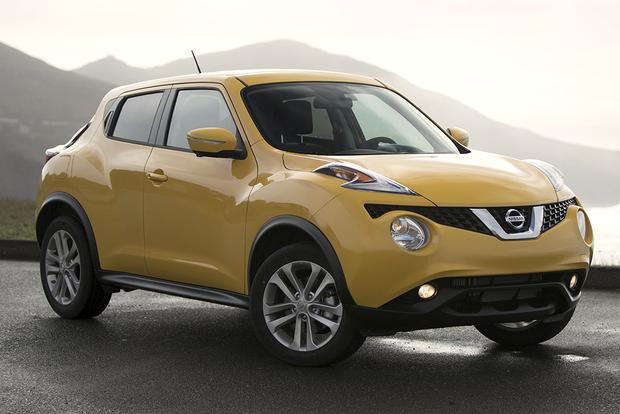
Behind the Wheel
The JUKE's turbocharged engine delivers a healthy dose of exhilaration. Both off the line and in midsprint, this energetic little hatchback has plenty of get-up-and-go power. Passing other cars is especially fun, as the drivers you overtake are sure to give the JUKE a look that says, "What in the world is that thing?"
To customize the driving experience, Nissan equips the JUKE with its I-CON System, which allows the driver to choose from three operating modes: Normal, Sport and Eco. Each mode alters throttle response, steering speed and transmission settings based on your preferred driving style.
The JUKE is an agile handler, benefiting from a precise steering system and a firm suspension. It's particularly nimble in corners, remaining stable and well planted even at higher speeds. And like most good sports cars, its performance seems to tighten up more as it's pushed harder. Add all-wheel drive and the JUKE becomes a capable 4-season vehicle. When there's no snow or mud to tread through, you can apply the all-wheel drive to a performance-oriented drive on a curvy country road.
The Nissan Juke for sale is available from Group 1 Nissan, so click here to see the Nissan range.

Posted on October 4th, 2017
Used Nissan Qashqai buying guide (2014-present)
The Nissan Qashqai is a great family car thanks to its comfy driving experience, spacious cabin and low running costs. It was facelifted in early 2017, so there are some great deals on used versions.
Click ‘login’ on carwow’s homepage to sign up and see our range of new, nearly new, pre-registered and ex-demo cars.
What is it?
The Qashqai is a great family car, combining the running costs of a family hatchback with the extra space and lofty driving position of an SUV. It’s comfortable on the road and easy to drive, while optional four-wheel drive brings extra peace of mind if you live in rural areas.
Nissan Qashqai 2017 facelift
A facelifted Qashqai was revealed at the beginning of 2017. The new model featured more angular headlights with LED lighting signatures and a more prominent grille and angular bumper design than the previous model. The interior boasts a redesigned steering wheel with easier-to-use thumb controllers and new graphics for the infotainment system.
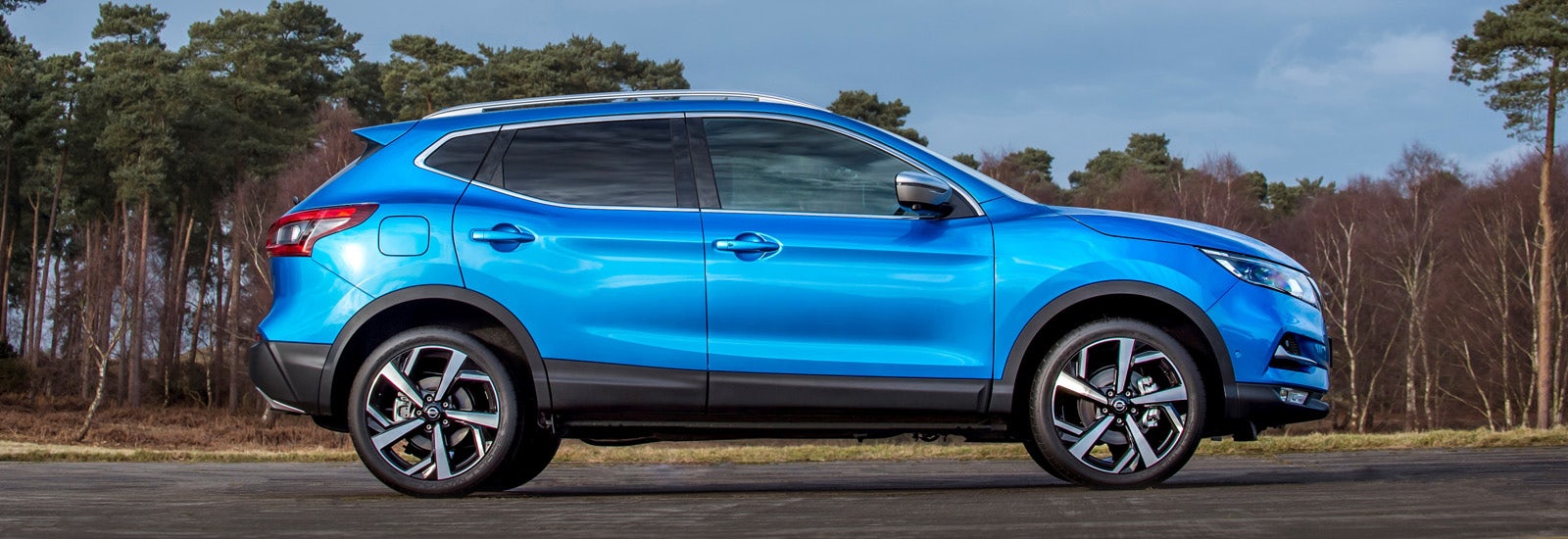
What engine should I get?
If you’re planning on covering a lot of miles in your Qashqai, opt for one of the two diesel engines available. The frugal 1.5-litre unit is pleasantly responsive in use and can return up to 70mpg – impressive for an SUV. If you’re after a four-wheel drive or an auto gearbox, these are only available on the more powerful 1.6-litre – even with the auto, it returns an impressive 62mpg.
Those covering medium mileages or who drive more in town will be better suited by 1.2-litre petrol that returns a claimed 48mpg – it’s smooth and fairly hushed in normal driving. The other petrol choice is a more powerful 1.6-litre turbo unit that feels pleasantly strong if not genuinely fast.
Used Nissan Qashqai running costs and insurance
The smaller 1.5-litre diesel only emits 99g/km of CO2 so incurs no road tax if it was registered before April 2017. The Qashqai is relatively inexpensive to service and parts won’t cost as much as some rivals. Insurance will be fairly affordable – entry-level 1.2-litre petrol models equipped with the optional Smart Vision safety pack fall into insurance group 13, mid-range models sit in groups 15-17 and highly specced diesel models sit in groups 19-21.
Should I buy a used or new Nissan Qashqai?
Buying a used Qashqai has its benefits – it’s generally cheaper than buying a new model and, because dealers have stock cars readily available, you can drive away on the same day. There are benefits to picking a new model, however, such as the fact that new cars tend to be offered with better finance packages and that you can pick your exact colour, trim and spec before buying. For more information, check out our explainer of the pros and cons of new vs used cars.
Can I get a pre-reg Nissan Qashqai?
Dealers will have a range of Nissan Qashqais pre-registered and ready-to-go on their forecourts. Models that are pre-registered will have first been registered by the dealer to help them meet their targets and are usually cheaper than an equivalent brand new version. While they’re essentially new cars, you’ll technically be the second owner if you purchase one.

Used Nissan Qashqai problems and what to look out for
Reliability is one of the Qashqai’s strong suits – there has only been one recall in the car’s lifetime to fix an issue with models fitted with a tow bar. Many of the Qashqai’s major components have been tried and tested in a range of other Nissan and Renault products with little fault so should provide years of good service.
A handful of owners have reported the car’s rear shock absorbers failing. Owners describe hearing a rattling noise or the vehicle not moving as it should over bumpy roads so, when test-driving a stock car, listen out for any odd noises coming from the rear – especially when driving over bumpy roads.
Some have reported issues with the engine’s turbo – resulting in a loss of power and worse fuel economy than expected. This issue can be identified by driving the car or by a whistling noise coming from the engine or blue/black smoke coming from the exhaust. If affected, the car’s turbo will need replacing, although this will be covered if your car is still in its warranty period.
Used Nissan Qashqai warranty and servicing
Nissan’s three-year/60,000 warranty begins once the car was first registered and, crucially for used buyers, is transferable between owners so nearly new examples will still have lots of warranty left. Servicing intervals for petrol Qashqais are every 12,400 miles and every 18,600 miles for diesels.
What options should I look out for?
When searching for a used Qashqai, here are a few packages and optional extras to look out for:
Smart Vision Pack – this safety pack adds Traffic Sign Recognition, High Beam Assist – a feature that automatically dims your high beam when it senses oncoming traffic – Lane Departure Warning, Forward Emergency Braking and Front and rear parking sensors
Tech Pack – adds a seven-inch touchscreen infotainment system with sat nav, DAB digital radio and a colour rear-view camera
Comfort Pack – adds a panoramic glass roof and satin silver roof rails
Premium Pack – includes rear privacy glass, 18-inch alloy wheels and electric automatic folding door mirrors
Heat Pack – adds heated front seats and a heated windscreen
Nissan Qashqai history

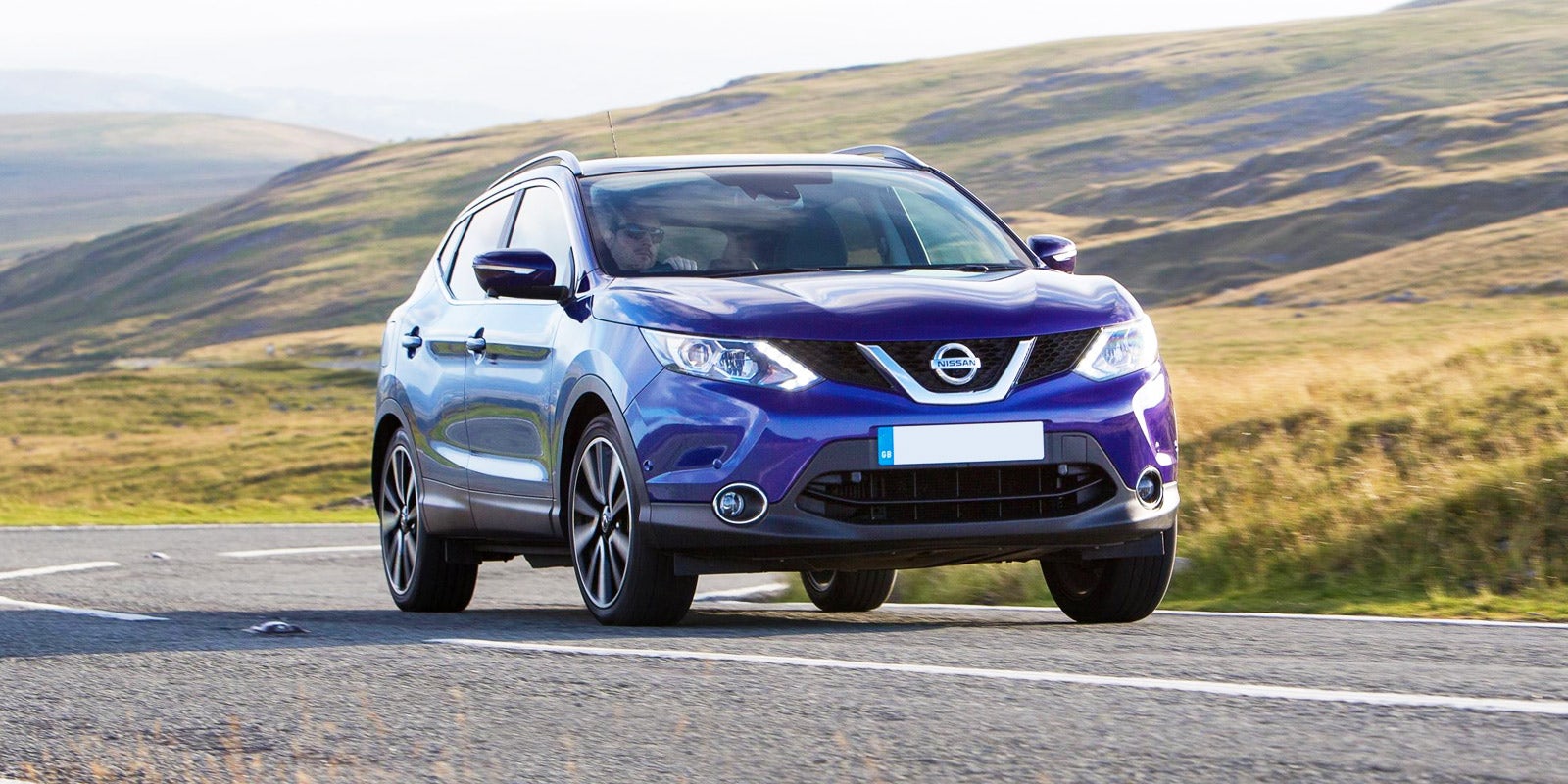

Looking for a Nissan Qashqai for sale? Used Qashqai are in high demand and pretty few and far between. Try a used car dealership, such as Group 1 Nissan.
Article source: https://www.carwow.co.uk/blog/used-nissan-qashqai-guide
Posted on September 1st, 2017


















